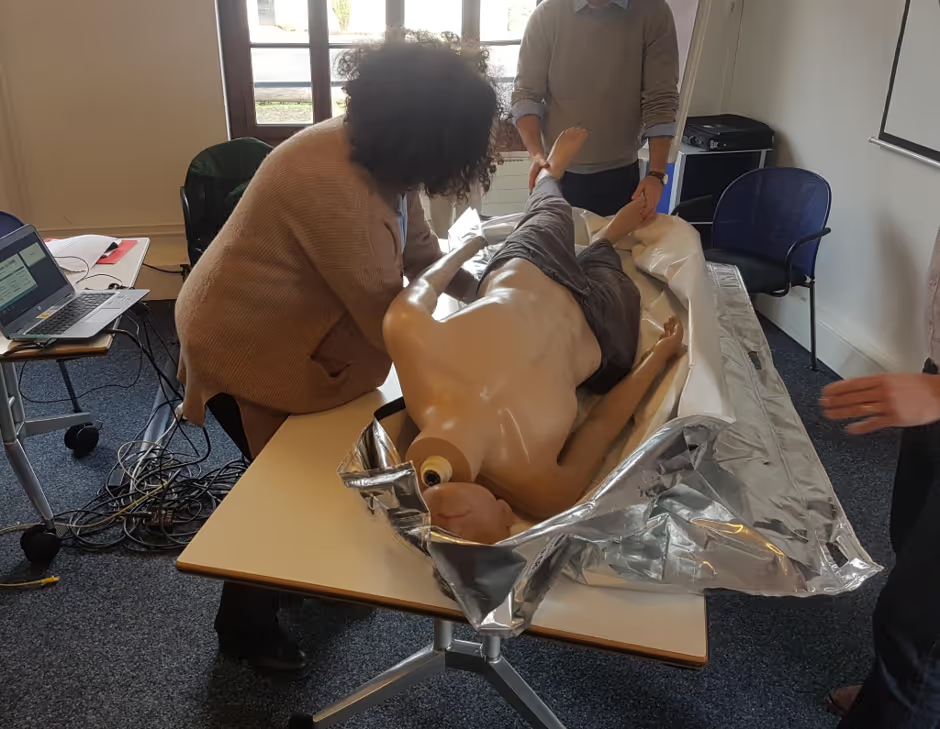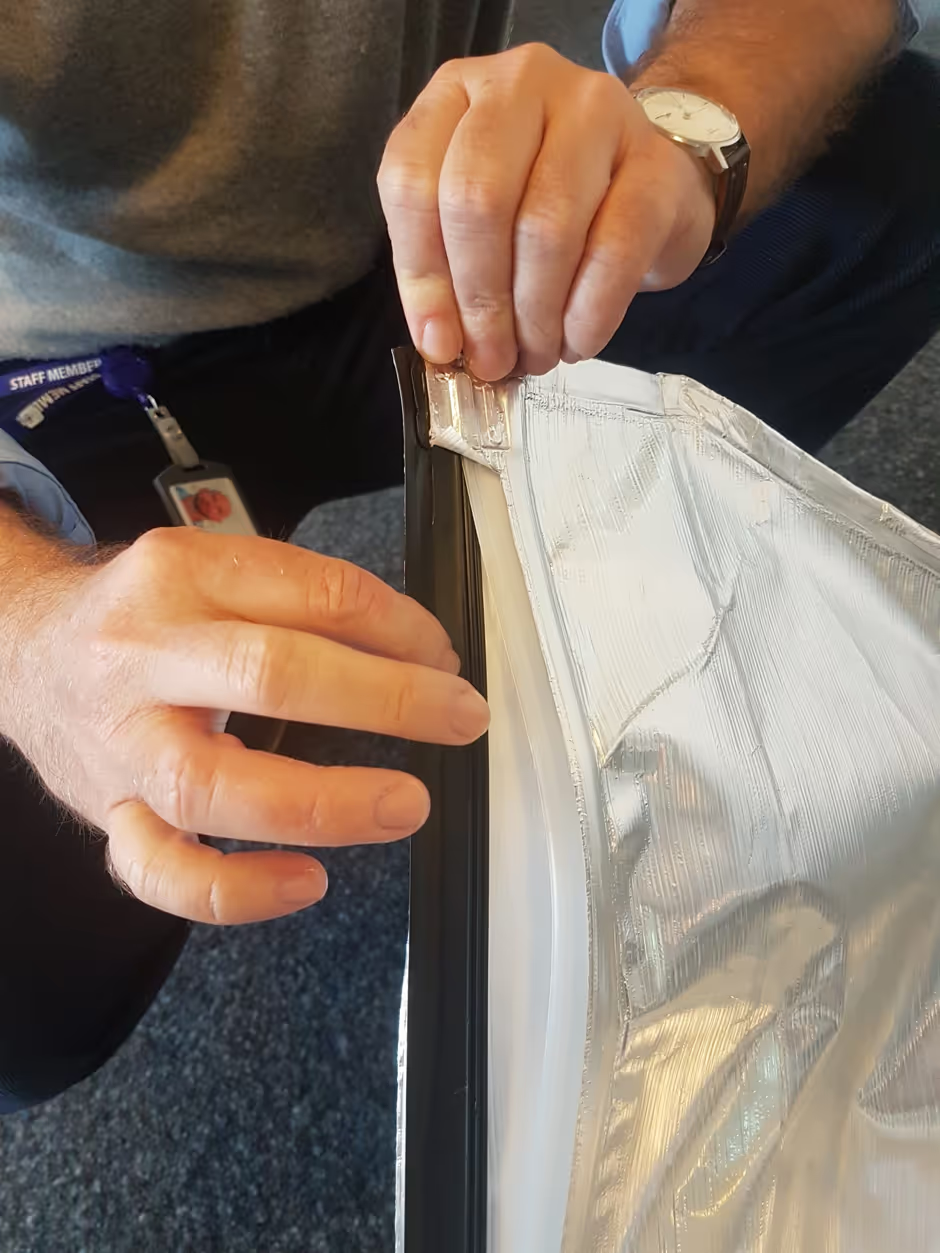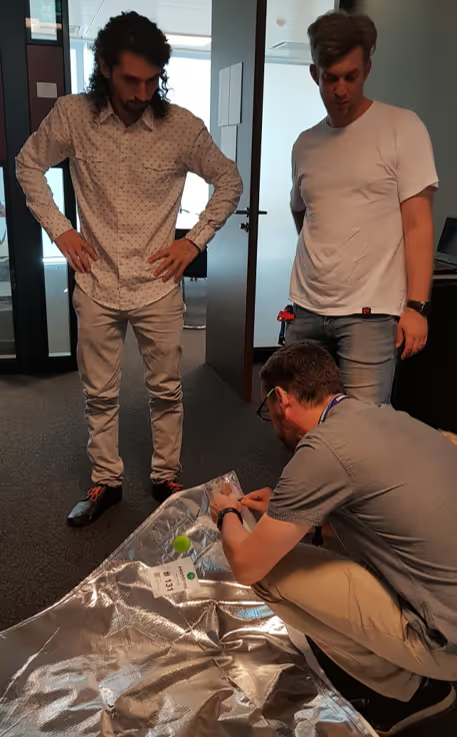Reflecting on our Better Body Bag Journey with the HIF
19
March
2020
Type
Grantee insights
Area of funding
Humanitarian Innovation
Focus areas
No items found.
Year
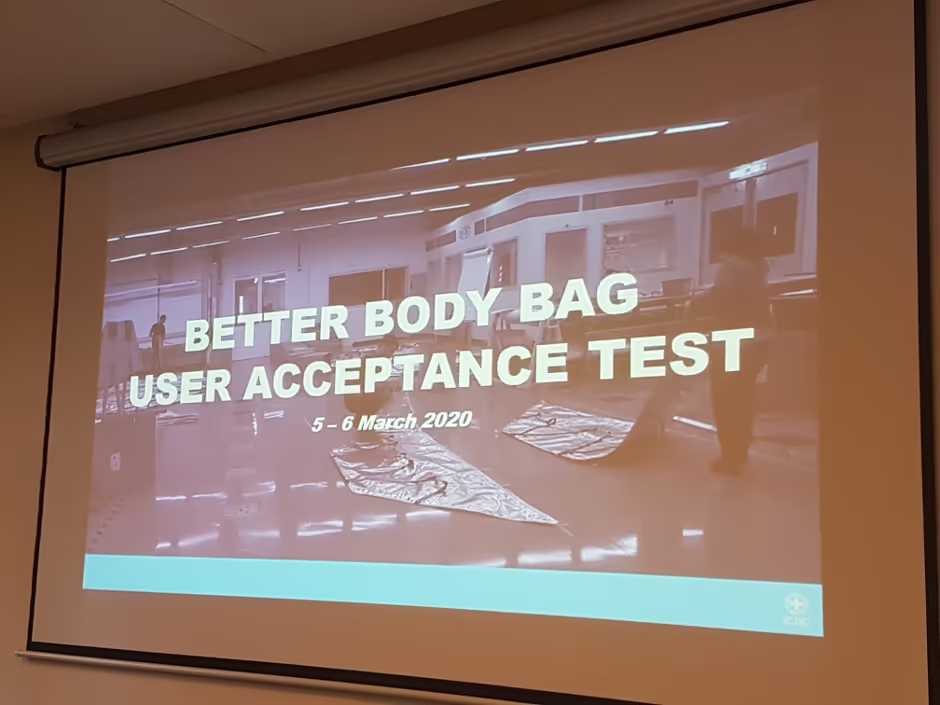
As our Humanitarian Innovation Fund grant comes to an end, it is time now to wrap up the project and show our evolution over the last two amazing years.
The Better Body Bag is the next generation of body bags. It aims to set new standards in identifying victims of natural disasters and armed conflicts. Its primary goal is to protect the identity of the victim by delaying decomposition of the deceased person, and ensures closure for the families by improving visual identification through forensic staff.
Where it all started
The Better Body Bag project started as a challenge at a Humanitarian Hackathon organised by THE Port at CERNs IdeaSquare in 2014. HIF funding gave the hackathon team, that founded the non-for-profit “Social Solutions Research association (SSRa)”, the opportunity to focus on industrial manufacturing of the Better Body Bag. With this we sought to deploy the first 10,000 bags in the field under the supervision and evaluation of our project partner, the International Committee of the Red Cross (ICRC).
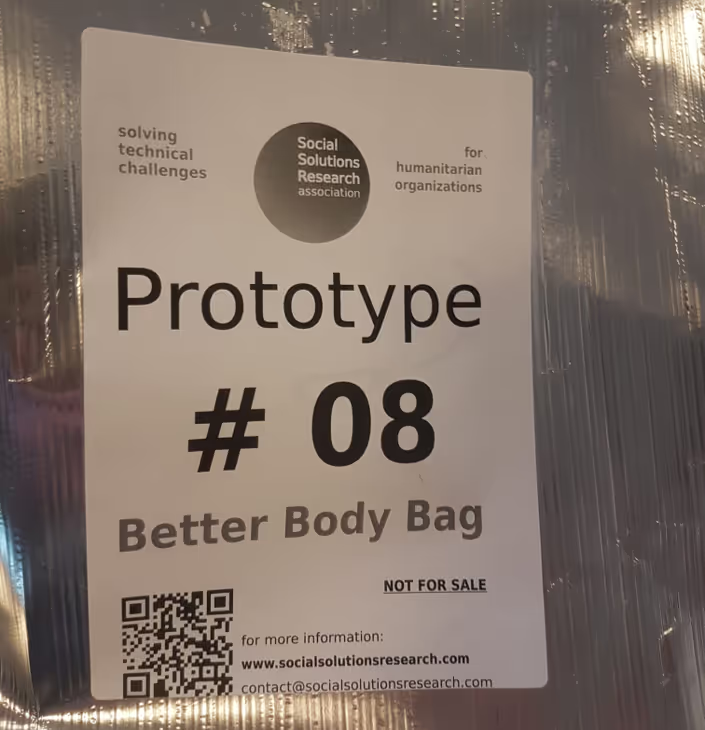
Getting to the final product
Regular feedback and improvement circles have allowed for improvements to the specifics of the body bag and ensured the optimal performance. From this we were able to test the usability of the Better Body Bags in real deployment conditions.
We had a steep learning curve that enabled us to come up with a viable product, that can now be deployed in the field. We were able to build upon the results of effectuated field tests in Thailand that ICRC conducted using pig carcasses as proxies for human bodies. As well as building on the learnings from changing elements, such as the super absorber pad location, the closing mechanism, and improved handles. We were able to get final feedback and latest demands in a “User Acceptance Test” organised in collaboration with ICRC, whereby forensic experts and field workers came together in a two-day workshop to test our product in all its facets. This left us with the great feeling, that our work over the past two years is considered valuable to the experts and can make a difference in helping to improve the identification of victims, and enabling practitioners to return bodies to their loved ones.Thanks to the financial support through the HIF grant and the continuous knowledge sharing and support from our partner the International Committee of the Red Cross, we made huge progress in the past two years. From a still very much prototype at the end of 2017 to a now viable product, that can help improve the working conditions for forensic experts in the field allowing them for visual identification of deceased persons and thus allowing the effected families to retrieve their loved ones.
So, what will happen next?
Next stop: Scaling. To allow for scaling of the project, we have filed for an international patent of the Better Body Bags to be ready to identify production partners, who can handle larger quantities and thus will enable us to outsource the production process.
Furthermore, together with our partner ICRC, we are looking forward to presenting the Better Body Bags innovation during the bi-yearly Geneva Health Forum conference in November 2020 to global health practitioners and experts.
No items found.
Stay updated
Sign up for our newsletter to receive regular updates on resources, news, and insights like this. Don’t miss out on important information that can help you stay informed and engaged.
Related articles
all latest news
.png)
Elrha insights
The 16 Days of Activism: Innovating GBV response amid global challenges

Elrha insights
Integration, inclusion, and innovation: What we learned at the 2025 International Conference on Family Planning

Elrha insights
Climate adaptation in humanitarian WASH: five lessons from World Water Week
Explore Elrha
Learn more about our mission, the organisations we support, and the resources we provide to drive research and innovation in humanitarian response.
